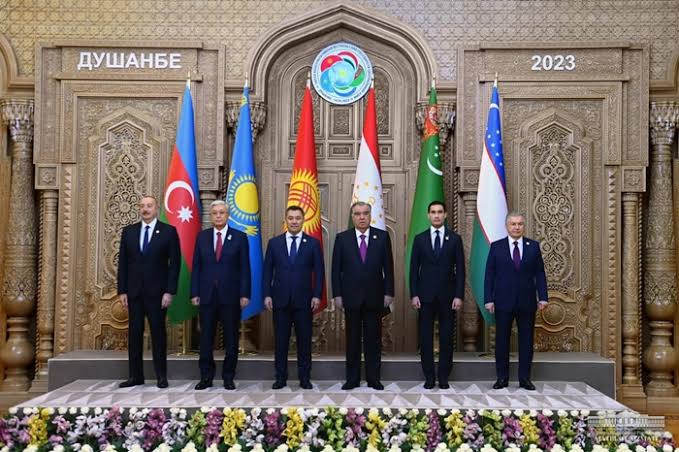Dushanbe Summit – A Step of Regional Consolidation

The Fifth Consultative Meeting of the Heads of States of Central Asia, held on September 14 in Dushanbe, became an important political and historical event that raised practical cooperation between the countries of the region to a qualitatively new level.
This summit completed the first five-year stage of cooperation, which confirmed that the process of regional rapprochement has become sustainable, progressive, and irreversible.
It is important to note that while modern international relations are characterized by a high level of confrontation, increasing geopolitical tensions, and escalating conflicts, the Central Asian states demonstrate a desire to increase regional cooperation in all key areas of mutual interest.
In this context, the summit in Dushanbe is another confirmation of the determination of the states of the region to jointly confront new challenges and threats, intensify trade, economic, investment, cultural, and humanitarian cooperation, expand regional collaboration, and increase the international subjectivity of Central Asia in world politics.
It should be noted that since the first Consultative Meeting of the Heads of State of Central Asia in Astana on March 15, 2018, this format has become a stable mechanism for regional cooperation, allowing important decisions to be made on key issues of the development of Central Asia, discussing and developing common positions on pressing issues of global and regional agenda, determine prospects for further expansion of political, economic interaction and the formation of a single cultural space in the region.
Thanks to the common political will and joint efforts, as well as the course taken by the countries of Central Asia towards regional rapprochement, today, our countries are actively developing platforms for dialogue and introducing new forms of economic cooperation. Dialogue formats, interstate investment funds, and companies are being created, industrial cooperation projects are being implemented, and cross-border industrial trade and industrial zones are being built, which serve the growth of the economies of the Central Asian countries, create precedents, and lay a solid foundation for sustainable development and stability of the region.
One of the essential components of regional development is the 10 “CA Plus” formats created with leading foreign partners, within which the countries of the region maintain a single coordinated and agreed position and jointly promote regional interests.
Of course, this is recognition by external actors of the international legal subjectivity, independence, and self-sufficiency of our region and its growing geo-economic significance.
It should also be emphasized that the positive dynamics in the development of regional cooperation are entirely consistent with the initiatives of President Shavkat Mirziyoyev, who identified Central Asia as the main priority of Uzbekistan’s foreign policy.
The main results of this policy were strengthening good neighborliness and trust, resolving existing problems, developing regional cooperation, and active interaction in the international arena.
In his speech at the Dushanbe Summit, the Head of Uzbekistan noted that “thanks to common efforts, we have managed to make serious progress in resolving vital issues and filling our cooperation with qualitatively new content, political contacts, and inter-parliamentary exchanges have become regularly, and various platforms for dialogue and cooperation have been launched”.
It was noted as the main achievement that stability and unity are strengthening in Central Asia. Our region is becoming one of the important centers of economic growth and investment activity, once again regaining its historical role as a transport hub connecting West with East and North with South.
Taking into account an in-depth analysis of the impact of global processes on the sustainable development of the region, it was stated that the ability to counter these threats directly and effectively depends on the consolidation of joint efforts aimed at deepening a multifaceted partnership.
An important direction is the expansion of security cooperation.
The proposal to hold regular meetings on security issues with the coordinating role of the secretaries of the Security Councils of our states was supported.
The Leader of Uzbekistan also initiated the Interstate Program for the protection and strengthening of the borders of the countries of Central Asia and the formation of a Regional System of Forecasting, Prevention, Early Warning, and Joint Response to Emergency Situations and noted the importance of continuing joint exercises to develop scenarios for countering traditional and new security threats.
It should be noted that in the speeches of all forum participants, there was a common desire to give a systematic character to regional cooperation in security and to solve emerging problems in collaboration.
In particular, the President of Kazakhstan Kassym-Jomart Tokayev proposed holding a Dialogue on Security and Cooperation in Central Asia in Kazakhstan in 2024 at the level of secretaries of the Security Councils to improve existing mechanisms of interaction in this area.
President of Turkmenistan Serdar Berdimuhamedov took the initiative to create, under the auspices of the UN, a meeting of the Dialogue on Security and Cooperation in Central Asia to develop common approaches and solutions aimed at bringing together and synchronizing efforts to ensure sustainable, conflict-free development of our region.
President of Tajikistan Emomali Rahmon noted that issues of ensuring regional stability should remain the focus of constant attention, considering the crisis of the international security system and the growth of conflict potential.
President of Kyrgyzstan Sadyr Zhaparov, having updated the importance of developing and ensuring a system of collective information security to jointly counter cyber threats and prevent the use of the Internet space and social networks by international terrorist and religious extremist organizations, noted the need for close cooperation through the Security Councils and the competent authorities of the countries of Central Asia.
Of course, one of the essential practical results of the summit was the adoption of the Regulations on the Council of National Coordinators for the Consultative Meetings of the Heads of State of Central Asia, which lays the foundation for the institutionalization of this mechanism.
In fact, over the past period, a lot of work has been done within the format to build mutually beneficial regional relations, the participating countries have put forward many initiatives and proposals, and many documents have been signed. The stated circumstances require systematization and regulation of regional processes. In this context, establishing an institution of national coordinators will allow for monitoring the implementation of previously reached agreements, coordinating areas of activity, and developing new proposals to deepen interaction in Central Asia.
In general, the results of the summit confirmed the determination of the heads of state of the region to jointly confront common challenges and threats and promote a united Central Asia as a reliable factor of stability and security throughout the Eurasian space.
The decisions of the Consultative Meeting in Dushanbe will give new impetus to further regional consolidation, deepening full-scale strategic partnerships, and implementing joint projects that ensure mutual growth and sustainable development.


